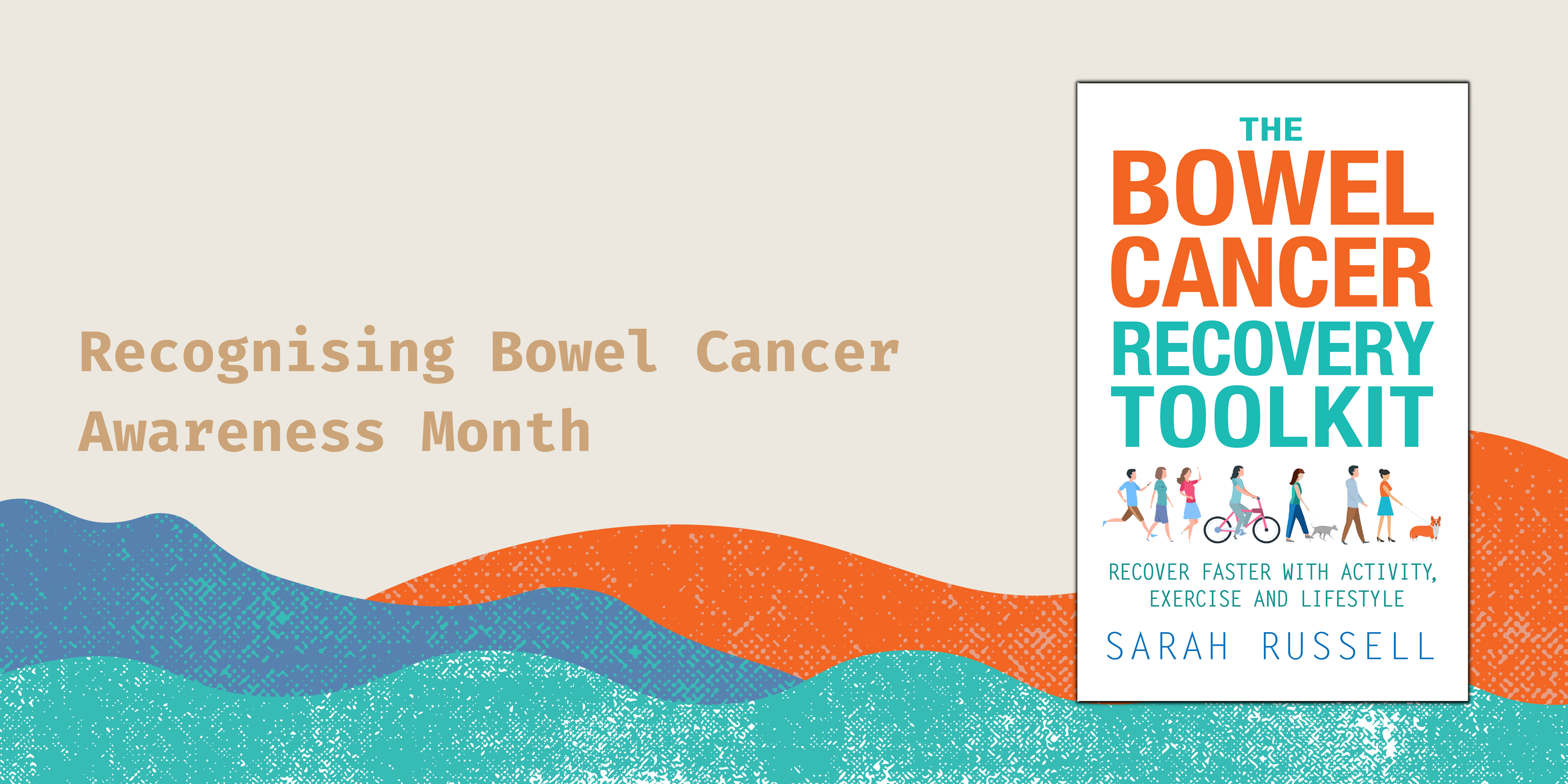
Sarah Russell MSc – Clinical Exercise Physiologist – Author of ‘The Bowel Cancer Recovery Toolkit’
If you’ve had surgery for bowel cancer, you may be wondering if it’s okay to do core exercises, especially if you have a stoma. There isn’t a huge amount of guidance and it can leave you feeling confused and vulnerable.
The good news is that not only is it safe to do core exercises, but it’s a key part of your recovery which will help you get back to strength much faster.
But where to start? Which exercises to do? and are there any to avoid?
Nursing clinical guidelines actually recommend that you can start to do ‘core abdominal’ exercises around 3-4 days post-surgery and then to continue with these for life.
But these are not fitness core exercises. We’re talking about things you can even do in bed, such as breathing techniques, knee rolls and pelvic tilts. Very gentle physiotherapy rehab.
You need to work on rehabilitation and core function before strength.
So.. how do you do it?
Regardless of when your surgery was and before you get started on gym sessions or fitness classes you need to do a phased programme of rehab exercises for your deep inner core.
Don’t think that, because you’re otherwise ‘fit’ or you’re surgery was years ago, that your core is functioning properly and you can rush back to planks and sit ups. So we start with physio-based/clinical Pilates rehab movements, things like deep core contraction exercises and diaphragm breathing. I know… it sounds dull and you’re desperate to get to the tough stuff… but it’s super important to get this bit right first.
These exercises are all explained in full detail in my book The Bowel Cancer Recovery Toolkit where I’ll take you through them step by step, but here’s a quick guide to get you started:
Immediately post-surgery (or beforehand if you can)
It’s recommended that you start this core physiotherapy around 3-5 days post-surgery if you’re feeling well enough. It’s perfectly safe to exercise in this way, even if you have pain. Start to gently move your body and you’ll reduce your pain and build confidence.
- Begin with diaphragm breathing – breathe in through your nose, breathe out through your mouth. Feel your ribs gently push out laterally as you inhale to the sides and then close back down as you exhale. Like an umbrella opening and closing. Don’t allow your belly to push out as you breathe in. Practise for 1-2 minutes and repeat 2-3 x per day.
- Learn how to contract your deep abdominals and pelvic floor – practise contractions and a feeling of ‘drawing in and up’ whenever you can through the day, sitting at a traffic light, or when watching TV. Or spend time lying on your back in bed and learn how to contract and tighten the deep core. Ask a physio to help you with this, find the information in my book or arrange a session with me online.
- Other post-surgery exercises you can do include pelvic tilts, a gentle shoulder bridge, knee rolls side to side, hands and knees pelvic tilts and other gentle Pilates exercises.
- At this stage, avoid anything that involves lifting your head, or BOTH legs at the same time. Focus on exercises on your back and then, as you feel stronger, progress to single leg slide outs and things on your hands and knees on the floor; cat cow is a great exercise – remember to breathe.
Then progress to…
But this is just the start. Progress to exercises where you start to gently challenge the core a little more.
- Try using a 7” Pilates ball between your knees, and under your hips, to progress the exercises you’ve already done.
- Try a stronger and bigger shoulder bridge squeezing a ball between your knees. Make it super-slow and focus on contraction of the deep core as you lower the bridge down.
- On all fours, try a leg slide out, shoulder taps and a bigger cat cow movement to encourage abdominal relaxation and co-ordinated core/pelvic floor control.
If at any point you feel pressure around your incisions or stoma or through your pelvic floor, then please adapt the movement. Make it a little easier, adapt your position and modify the number of repetitions you do. Remember always to breathe on the effort part of the movement.
Things to build up to
Eventually, you should be able to do anything you like, including planking and modified crunches and advanced Pilates. Nothing is really ‘off the table’ BUT you must respect your abdomen at the same time as starting to work it. It’s super-important to build up carefully, taking each exercise that you do in a step-by-step way – it might take you months, if not years to build up to doing very advanced stuff.
Exercises such as full press ups, straight leg lifts on your back and forearm planks require significant core control and strength, and should be treated with respect. In some cases, it might be that those exercises will never be appropriate for you and you may always need to modify.
Always watch out for a feeling of pulling or pressure around your incisions and stoma (if you have one), and avoid a rising/doming of the abdominals. If you experience that, then you’re simply not strong enough to tolerate the load you’re asking of your body.
To find out more, my book The Bowel Cancer Recovery Toolkit is widely available at bookshops or online from www.hammersmithbooks.co.uk/product/the-bowel-cancer-recovery-toolkit/, Book Depository, Books Etc and Amazon, or join one of my online Pilates classes at www.theostomystudio.co.uk or book a 1:1 zoom session with me.
